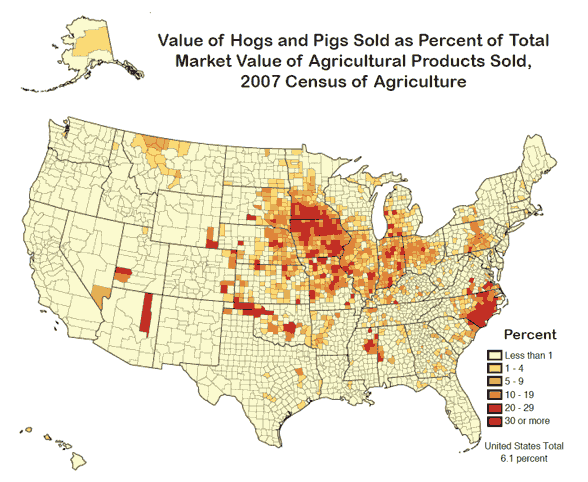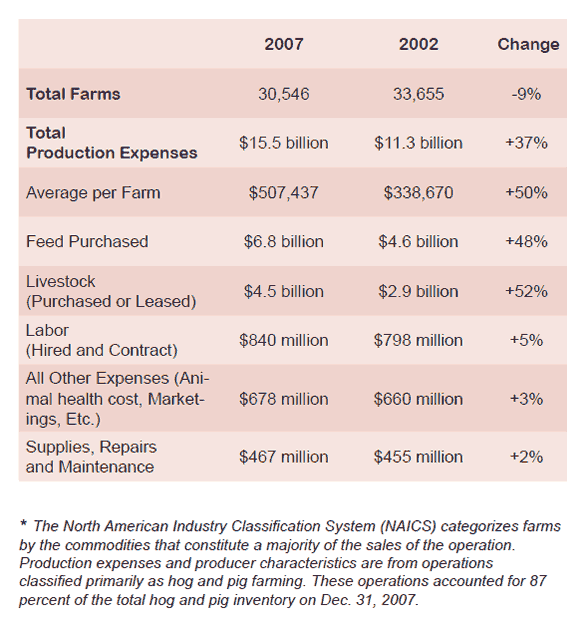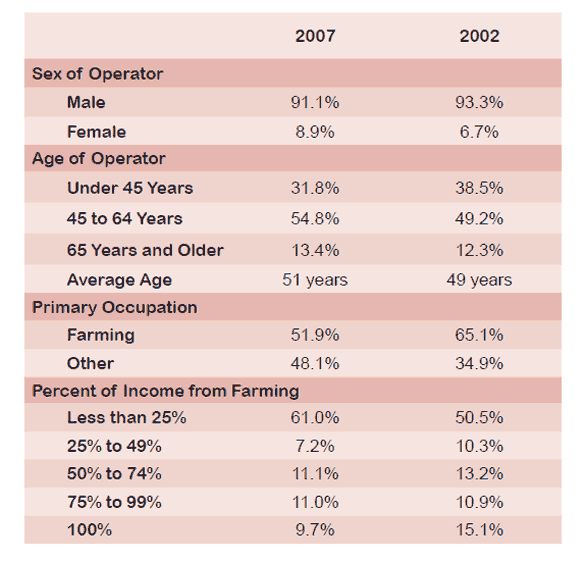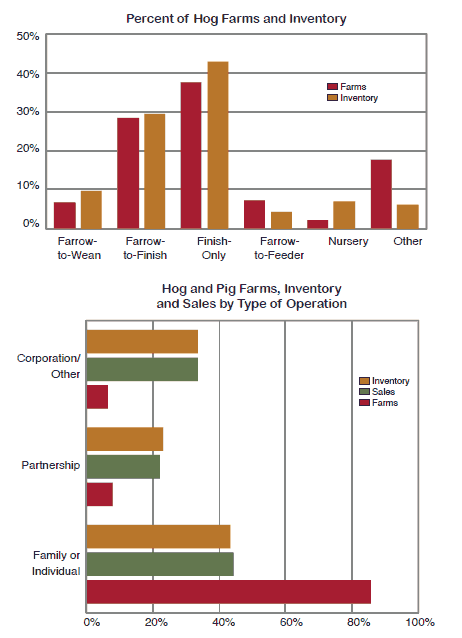Hog and Pig Farming in the 2007 Census
Hog and Pig Sales
The 2007 Census of Agriculture shows an increase in the value of hog and pig sales. During 2007, U.S. sales of hogs and pigs totaled $18.1 billion, an increase of $5.7 billion, or 46 percent, from 2002. These sales accounted for 6 percent of all agricultural products sold in the United States during 2007. The largest increases in sales were seen in Iowa (+$1.75 billion), North Carolina (+$921 million) and Minnesota (+$742 million).
Duplin County in North Carolina was the largest single county in terms of hog and pig sales during 2007, with $724 million, or 4 percent of the total U.S. value.

Production Expenses
Operations classified as primarily hog and pig farms* spent $15.5 billion to raise hogs and pigs during 2007, an increase of $4.2 billion, or 37 percent, from 2002. The five largest expense items for hog and pig producers were feed, purchases of livestock, labor, all other expenses, and supplies, repairs and maintenance. The steepest increases in cost were for fertilizer, lime and soil conditioners, up 64 percent, and gasoline, fuels and oil, up 63 percent. Average total production expenses per hog and pig farm increased more than $168,700 from 2002 to 2007.

Producer Characteristics
The 2007 Census of Agriculture showed a number of changes in the characteristics of U.S. hog producers since 2002. Both the percentage of female producers and the average age of all producers were on the rise. Nearly 9 percent of all hog producers in 2007 were women, up from 6.7 percent in 2002. The average age of all hog producers was 51 years, up from 49 in 2002. The percentage of hog producers under the age of 45 declined from 38.5 percent in 2002 to 31.8 percent in 2007.
Hog producers were more likely to derive income from non-farm sources in 2007 than in 2002. Only 51.9 percent of hog producers now list their primary occupation as farming, down from 65.1 percent in 2002. As a result, 61 percent of all hog producers derive less than 25 percent of their total income from farming and less than 10 percent obtain all of their income from farming.

Characteristics of Hog Farming
Finish-only operations accounted for 38 percent of all hog farms and 43 percent of the total U.S. hog inventory. Farrow-to-finish operations made up the next largest portion of operations, at 29 percent, and accounted for 30 percent of the inventory. Nursery operations accounted for the smallest portion of operations, at just 2 percent, and accounted for 7 percent of the inventory.
Although family farms made up 85 percent of hog and pig operations, they accounted for only 43 percent of the inventory and 44 percent of the sales. In contrast, corporations made up only 6 percent of the number of U.S. hog and pig operations, but accounted for 33 percent of the inventory and sales.

This article hasn't been commented yet.


Write a comment
* = required field